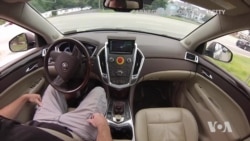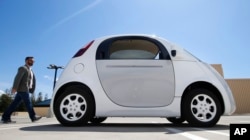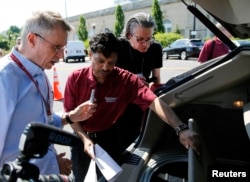Self-driving cars may be the wave of the future, but the wave still seems far away.
Nearly every major car manufacturer and several other technology giants have experimental vehicles on the road. What's missing from them, though, may be the computing power that will allow the cars to navigate the kinds of complicated driving situations we run into (or don't run into, we hope) every day.
The idea of a self-driving vehicle has been around since the 1930s, but it has taken 80 years for the science fiction to move into the realm of just science.
The turning point came on March 13, 2004, when 15 teams competed in the $1 million Grand Challenge, posted by the Pentagon’s research arm, the Defense Advanced Research Projects Agency, or DARPA. None of the 15 entrants completed the course in California’s Mojave Desert, which consisted of dirt roads with some obstacles. A converted Humvee, built by a team from Carnegie Mellon University in Pittsburgh, Pennsylvania, traveled the farthest.
Three years later, Carnegie Mellon's robotic vehicle won the competition, completing a 96-kilometer course in a mock urban setting with simulated traffic.
Recent success
Since then, researchers at Carnegie Mellon, with other institutions and car manufacturers, have been working on bringing autonomous cars to the roads. In a recent series of tests, their experimental Cadillac SUV drove its passengers from a suburban home to the city’s airport without a single glitch.
But the lead researcher, electrical engineering professor Raj Rajkumar, said driving through the inner city is another matter.
“The traffic around the inner city can be very dense — different kinds of vehicles, bicyclists and pedestrians that particularly jaywalk across the street and so on," he said. "They are crossing the roads between parked cars, so that is a very complex problem.”
Rajkumar said daylight driving in nice, dry weather is also easier than driving in winter, with wet leaves or snow covering lane markers. He said radars can see through plastic bumpers, but if laser-based radar, or lidar, gets covered with mud and sand, that could be a problem.
Such problems, however, can be solved, he said.
The arguments for self-driving cars are strong. Globally each year, more than 1 million people die and 15 million are injured in car accidents, 90 percent of which are caused by humans. Experts say self-driving cars will reduce those numbers dramatically because the cars obey speed limits, observe road signs and never run a red light.
Audi, Tesla, Mercedes-Benz and others already offer models with capabilities for self-steering and rear-end collision avoidance, reducing the tediousness and stress of long highway drives.
The human factor — getting people to trust a car enough to let go of the wheel — may be a bigger hurdle. But Rajkumar said it actually does not take that long.
“They begin to see that the vehicle is exactly very rational, drives safely,” he said, “and then they begin to relax. For some people, it takes five to 10 minutes. They start to relax and they start having a conversation, turning around, talking to people ... and they act as being very comfortable.”
Real-world 'tests'
Rajkumar cautioned that once self-driving cars are on the road, there will be people who will want to see what the driver-less vehicle will do if they cut it off or perform another sudden maneuver. Experts are still debating whether self-driving cars should carry some sort of a sign saying the car is being driven by a computer.
Most of the technology is already there, Rajkumar said. What is required is the drop in the price of some components, such as laser-based radar, and more sophistication in the computer programs that will control the car.
Rajkumar said what is also missing is the intelligence incorporated in software running on a computer platform that processes data from the sensors, understands what is happening around the car, makes the right decisions on time and sends commands to the steering wheel and the brakes.
There is more work to be done on the intelligence side, he said, but it will not take long.
“To me,” he said, “it will take about 10 years, maybe more than 10 years, for a vehicle to be able to drive itself everywhere that you and I can drive today, from any point A to any point B that a lot of consumers can drive.”
But Google, Uber and some others say they are already looking way ahead, preparing for the more distant future, experimenting with cars with no pedals and steering wheels that may fundamentally change the way we use cars.













